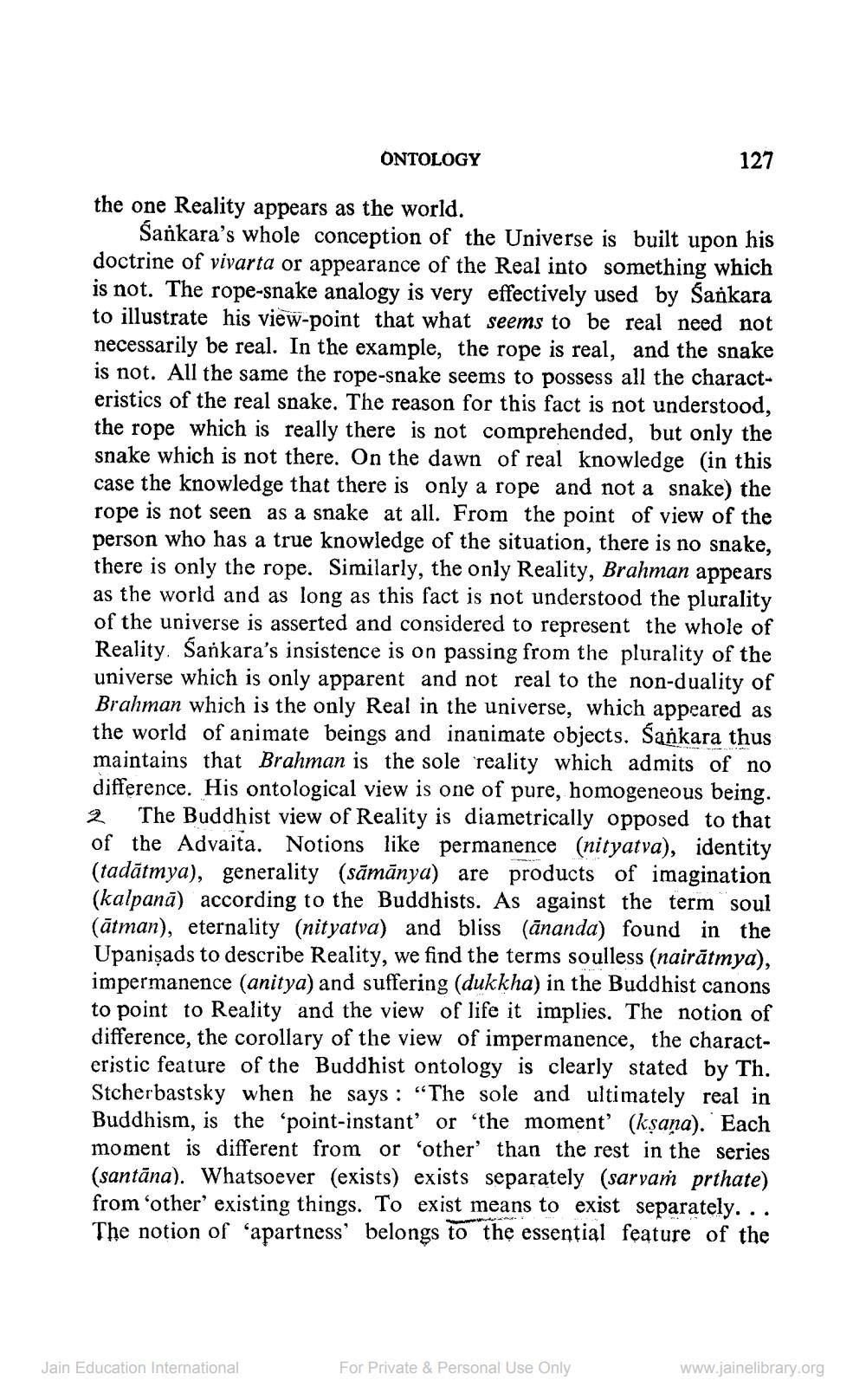________________
ONTOLOGY
127
the one Reality appears as the world.
Sankara’s whole conception of the Universe is built upon his doctrine of vivarta or appearance of the Real into something which is not. The rope-snake analogy is very effectively used by Sankara to illustrate his view-point that what seems to be real need not necessarily be real. In the example, the rope is real, and the snake is not. All the same the rope-snake seems to possess all the characteristics of the real snake. The reason for this fact is not understood, the rope which is really there is not comprehended, but only the snake which is not there. On the dawn of real knowledge (in this case the knowledge that there is only a rope and not a snake) the rope is not seen as a snake at all. From the point of view of the person who has a true knowledge of the situation, there is no snake, there is only the rope. Similarly, the only Reality, Brahman appears as the world and as long as this fact is not understood the plurality of the universe is asserted and considered to represent the whole of Reality. Sankara's insistence is on passing from the plurality of the universe which is only apparent and not real to the non-duality of Brahman which is the only Real in the universe, which appeared as the world of animate beings and inanimate objects. Sankara thus maintains that Brahman is the sole reality which admits of no difference. His ontological view is one of pure, homogeneous being. 2 The Buddhist view of Reality is diametrically opposed to that of the Advaita. Notions like permanence (nityatva), identity (tadātmya), generality (sāmānya) are products of imagination (kalpanā) according to the Buddhists. As against the term soul (ātman), eternality (nityatva) and bliss (ānanda) found in the Upanişads to describe Reality, we find the terms soulless (nairātmya), impermanence (anitya) and suffering (dukkha) in the Buddhist canons to point to Reality and the view of life it implies. The notion of difference, the corollary of the view of impermanence, the characteristic feature of the Buddhist ontology is clearly stated by Th. Stcherbastsky when he says : “The sole and ultimately real in Buddhism, is the 'point-instant or “the moment' (kşana). Each moment is different from or other than the rest in the series (santāna). Whatsoever (exists) exists separately (sarvam prthate) from other existing things. To exist means to exist separately... The notion of ‘apartness' belongs to the essential feature of the
Jain Education International
For Private & Personal Use Only
www.jainelibrary.org




